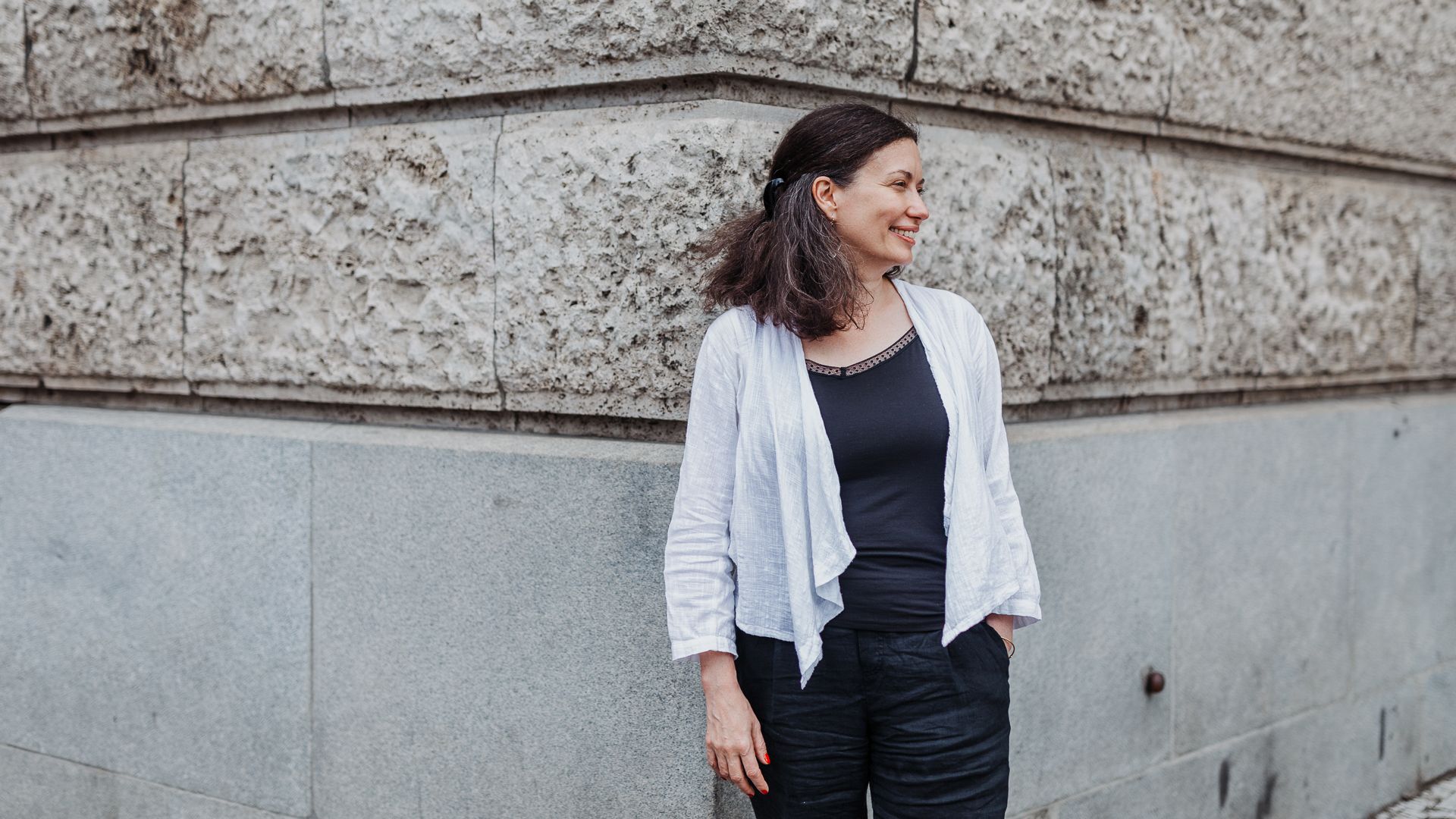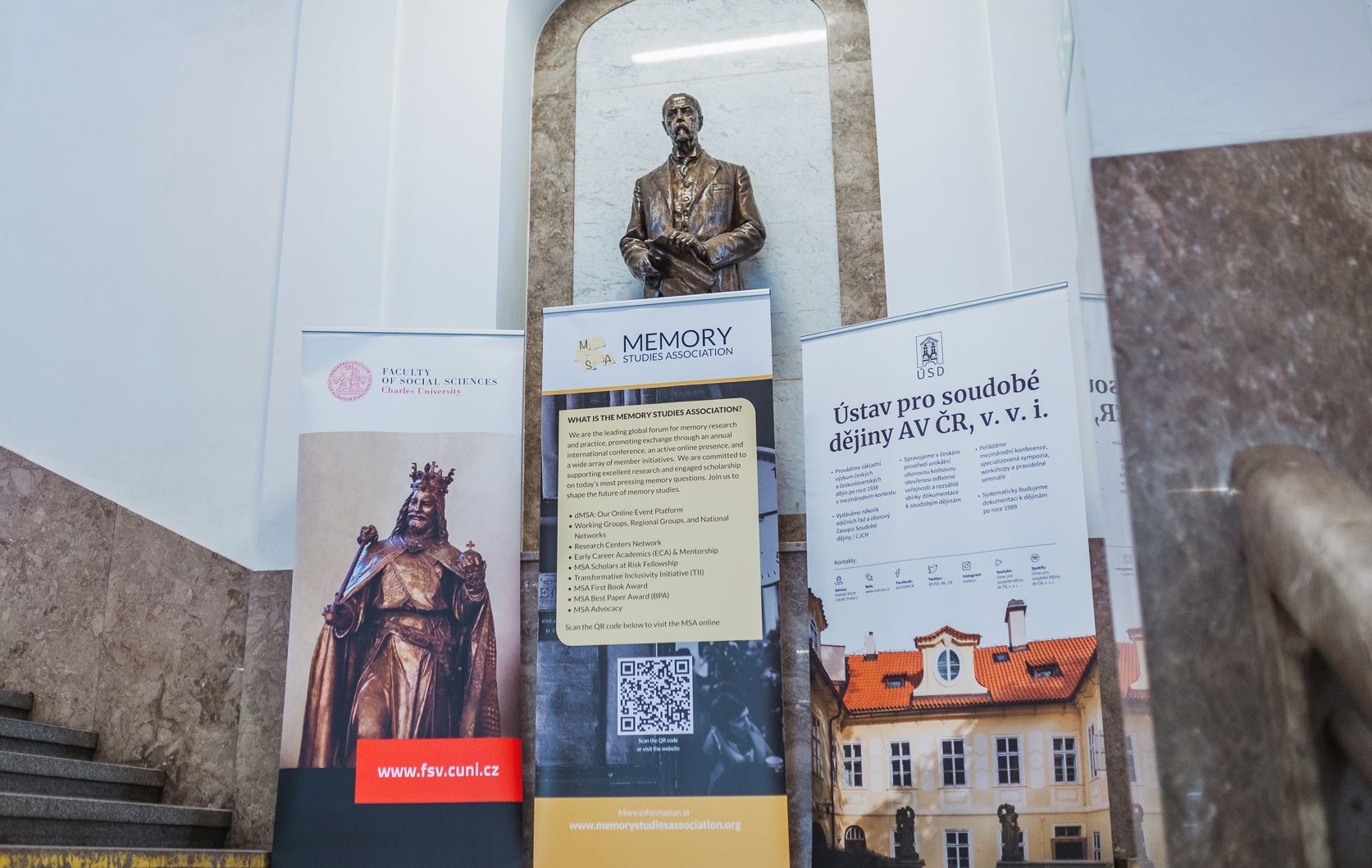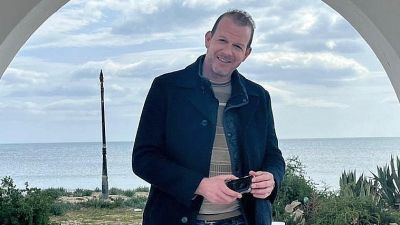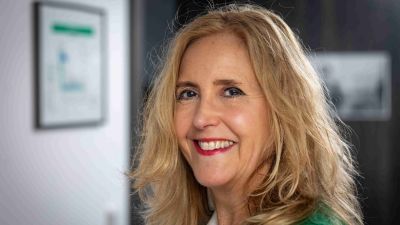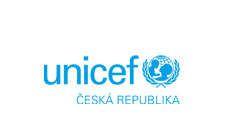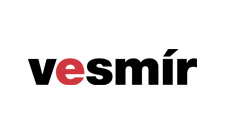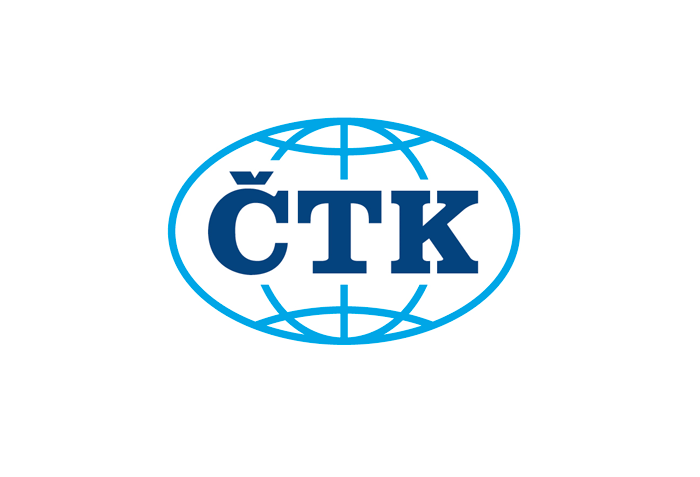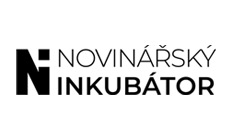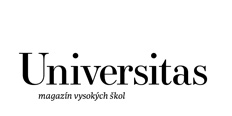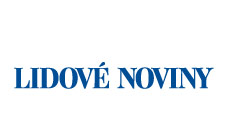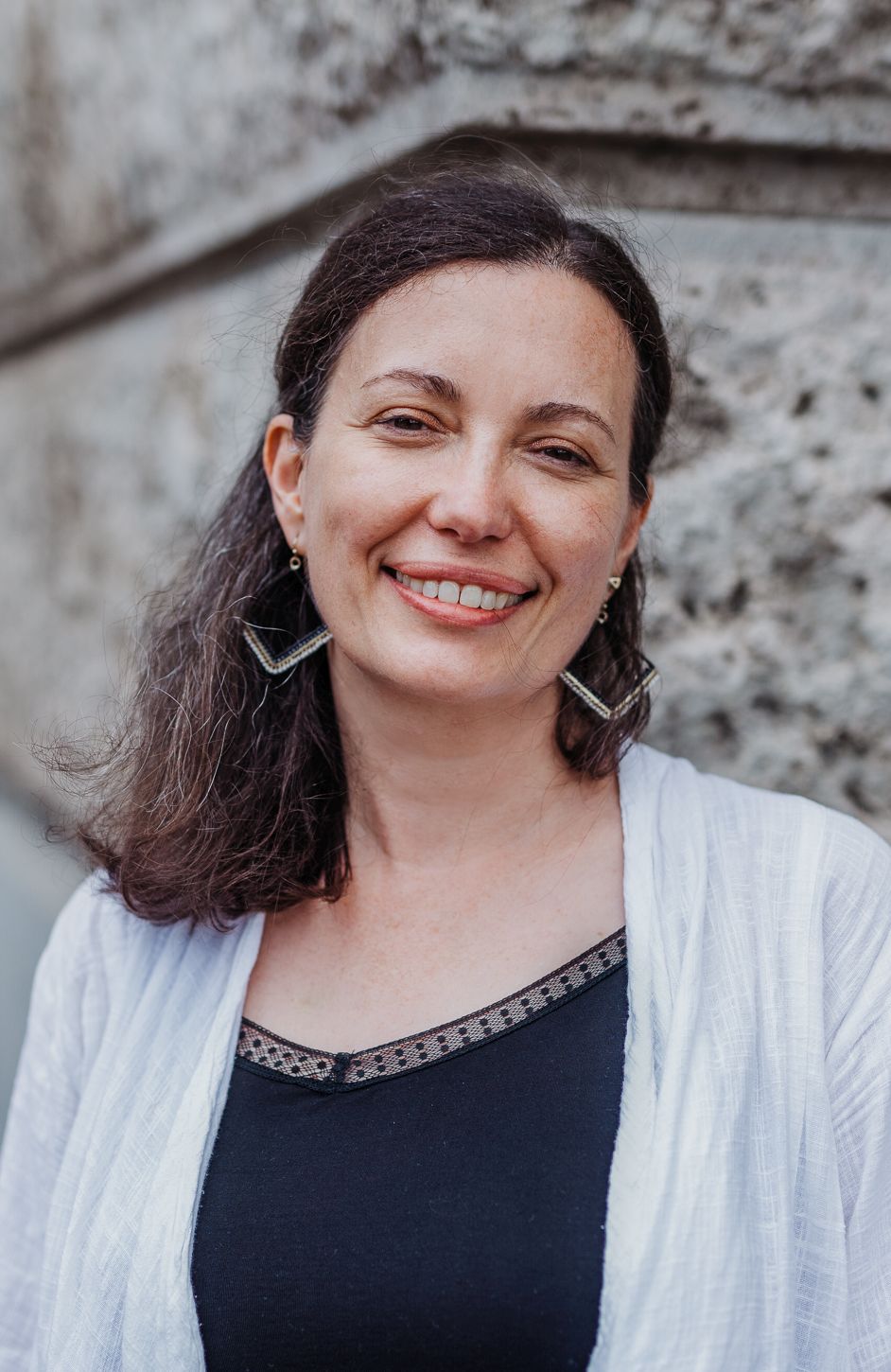 Memory is not just a slippery function of the human mind. At the heart of memory studies – a still relatively young field at the crossroads of the social sciences and humanities – are the memories of cultures and nations, shaped by shifting generational narratives and historical emotions. The field explores how societies relate to the past and how the meanings of that past evolve in the present. It takes a deeply interdisciplinary approach, drawing on history, sociology, anthropology, psychology, film and literary studies, as well as artistic research.
Memory is not just a slippery function of the human mind. At the heart of memory studies – a still relatively young field at the crossroads of the social sciences and humanities – are the memories of cultures and nations, shaped by shifting generational narratives and historical emotions. The field explores how societies relate to the past and how the meanings of that past evolve in the present. It takes a deeply interdisciplinary approach, drawing on history, sociology, anthropology, psychology, film and literary studies, as well as artistic research.
The Memory Studies Association, founded in 2016, brings together researchers, artists, curators, educators as well as policy‑makers dedicated to investigating how societies remember and represent the past. In mid‑July 2025, the MSA held its 9th annual conference, Beyond Crises: Resilience and (In)stability, in Prague, hosted by Charles University and the Czech Academy of Sciences.
“In the shadow of the conflicts in Ukraine and Gaza, the rise of populist and authoritarian tendencies all over the world, imminent climate collapse and humanitarian crises including ones in public health, Beyond Crises invites a multifaceted discussion on what memory scholars can learn from the memory of earlier crises and how that knowledge might be used to deal with ongoing political and social standoffs,” the MSA introduced its annual meeting held in Prague this year.
A leading memory studies scholar, Prof. Joanna Wawrzyniak from the University of Warsaw, is a founding director of the Center for Research on Social Memory as well as former President of the Memory Studies Association. During the conference in Prague, Joanna Wawrzyniak kindly agreed to share her insights and talk about the current challenges at the heart of memory studies.
What exactly is memory studies? What does it deal with?
What memory scholars do isn’t always immediately obvious. Many people outside the field associate memory with psychological workings of the mind and may assume we’re cognitive psychologists. But memory studies is less concerned with individual cognition and remembering. Memory studies focuses above all on how representations of the past are formed, maintained, and contested within societies. It explores the cultural, political, and historical dimensions of memory: how the past is mobilised in the present. At its core, memory studies asks, who uses the past, for what purposes, and in which contexts?
The foundation of memory studies is inherently interdisciplinary. To understand how the past operates in the present – and how our individual memories connect to broader patterns of remembering – we need insights from sociology, anthropology, history, literature, political science, and beyond.
How does your own academic work and experience fit into this broader field of memory studies?
I’m from Warsaw, not far from Prague, in a region where the past is not only ever-present but also highly contested. For decades, people here have grappled with complex legacies – of empires, occupiers, wars, dictatorships, resistance, and silence – often under shifting political regimes that shaped how history was told. In this context, memory studies offered me a language and a framework to explore how societies in Eastern and Central Europe confront, negotiate, or avoid difficult pasts.
“At its core, memory studies asks, who uses the past,
for what purposes, and in which contexts?”
That’s why the Memory Studies Association is so important. It connects scholars from Latin America, Africa, Asia, and other parts of the world who are asking similarly urgent questions – though in different historical and cultural settings. Memory studies allows us to draw comparisons and reflect on how societies reckon with past violence, injustice, or rupture – not only to understand those pasts better, but to inform how we live with them in the present and respond to them in the future.
Could we say, then, that memory studies is a kind of “applied history”?
That’s a nice way to put it. But I’d add that it’s very difficult – rather impossible – to fully grasp how the past really was. Historians work with available evidence to reconstruct events and offer interpretations, but they’re also well aware that history is always written from a particular perspective. In memory studies, we shift the focus from what happened, to how people remember what happened. That’s why we sometimes say memory studies is history to the second degree: we study how the past is used, represented, and made meaningful in different contexts.
We explore the narratives people construct, how they use the past in the present, and how their interpretations of the past shape politics or cultural expression. Our role as memory scholars is to study how the past is mobilised in different contexts – to understand why it matters and how it functions in society. This also means examining not just how people remember what they experienced, but how they imagine the past – their own or that of others – and the meanings they attach to it.
You mentioned people “imagining” the past, not just experiencing it. That is not the same, is it?
Actually, there’s an ongoing debate about what experience really is. What we call experience is never raw or untouched. We live through experience, yes – but to make sense of it, we have to represent it, whether through stories, images, rituals, or other forms. In that sense, all experience is constructed to some degree. So memory studies is about how the past is represented – how people give shape and meaning to what they’ve lived, or what they think others have lived, through cultural forms.
Could we say that memory, like reading a novel, is an imaginative act? You learn it, construct it, maybe relate it to personal experience…
… and often that imaginative construction involves emotion. This emotional dimension is very important. It influences not only what we remember, but how we feel about it – and how we pass it on to others. Think about how differently people can recall the same event – say, the end of a political regime, a factory closure, or a family migration. For some, it might be a moment of liberation; for others, a time of loss. These emotions shape how memories are preserved, shared, or silenced.
The current state of affairs throughout the world seems more than ripe for future re-consideration or reflection, research, conferences and publications. How do you, with your expertise, view this future “material” unfolding in the present?
The field of memory studies has historically developed in close dialogue with Holocaust scholarship and human rights discourse. That foundation remains vital, but recent years have brought an important debate – sparked by scholars such as Michael Rothberg and A. Dirk Moses – about how we approach comparisons between different histories and memories of mass violence. This so-called comparability debate raises difficult but necessary questions: to what extent can, or should, the Holocaust be compared to other genocides, including those unfolding in the present?
These questions are especially urgent in light of current events – whether in Gaza, Ukraine, Myanmar, Sudan, or other regions experiencing extreme violence. Memory studies, and indeed broader public discourse, must grapple with how to respond to these events in ways that are both ethically responsible and intellectually open. One of the key challenges for our field – and for policymakers as well – is how to expand our analytical frameworks beyond a Eurocentric lens, while still learning from the historical legacy of the Holocaust.
In a sense, memory studies has always been concerned with how societies make sense of extreme violence. But moments like these compel us to reflect on how the field itself must evolve – to remain relevant, globally attuned, and sensitive to the diverse contexts in which memory is being shaped today.
One might imagine “memory studies” as being in an archive and wading through old stuff. But it is in fact a study focused on the present, correct?
Even more than that – we often say memory studies is about the future. To have a past is to have a future. Societies without a usable past often struggle to imagine what lies ahead. Memory shapes the possibilities for action, identity, and hope going forward.
Is there something we can take away from the findings and outcomes of memory studies? We know of the saying, “those who don’t learn from history are doomed to repeat it.” But can you give an example of an application beyond academia?
Memory studies is very much practice-oriented. Some of us collaborate closely with heritage professionals, museum curators, oral historians, educators, and artists. For example, the Memory Studies Association has an active working group called Museums and Memory, which examines how museums around the world represent the past – a task that is both deeply practical and deeply political.
One of the key contributions of memory studies is that it cultivates awareness. It invites us to ask: how is the past constructed? Who gets to tell the story? Most of us are taught in school that “this is how it was” – a single, authoritative version of history. But when you travel to another country, visit a museum, or read a history book written from a different perspective, you often discover a strikingly different account. That’s a reminder that history is always told from somewhere, and that memory is shaped by context, politics, and emotion.
“Our knowledge speaks directly to the most urgent conflicts of the present.
People don’t just fight over land or power – they also fight over history.”
What we do in memory studies is analyse the mechanisms and strategies behind those representations – how they are created, circulated, and contested. While not all of our work is directed at the general public, it has direct relevance for those who are: teachers, museum professionals, cultural practitioners, journalists, and others involved in shaping public understanding. In that sense, memory studies doesn’t just study the past – it contributes to how societies live with their pasts, and how they imagine their futures.
Museums then play an important role educating the general public as well, also providing a view of the past.
Absolutely – they offer narratives of the past that reach far beyond academic circles. Museums tell stories through objects, images, and exhibitions that shape public understanding of history.
Education more broadly is a key area for us as well. At this conference, for instance, we’ve had several sessions on how history is taught in schools – how national narratives are constructed, what is included or left out, and how students engage with difficult pasts. Memory studies contributes to these conversations by offering tools to reflect on how the past is presented and how it might be taught in more inclusive, critical ways.
So the general public benefits from memory studies indirectly – through educators, cultural institutions, the media…
Yes, very much so. Some of our work filters into public understanding through those channels. And one of the most useful things memory studies offers is the ability to recognise how the past is being misused in the present. We’re good at deconstructing those patterns and exposing the power dynamics behind them.
It seems your area of research and its heritage offers huge consultational opportunities for the public sphere, policymakers, governments, ministries, etc. Are there such efforts, local or global?
Definitely. In our Association, there are strong working groups researching genocide, transitional justice, political violence, and the legacies of authoritarian regimes. These scholars generate not only academic insight but also practical, situated knowledge that can serve as valuable expertise for policymakers. Many contribute to local and international initiatives, including European and transnational projects that produce policy briefs and public recommendations.
A growing area of concern is how digital platforms and artificial intelligence are reshaping memory practices. This requires collaboration between experts in memory studies, information technology, and security studies. We need to understand how algorithms structure what historical narratives are visible – or invisible – online, and what that means for collective memory across societies.
The political stakes of memory are very real. The Russia–Ukraine war, for example, is not only a military conflict but also a mnemonic one – a struggle over historical interpretation. Just look at the controversy over the Holodomor: in Ukraine it is widely recognised as genocide, while Russian authorities deny this interpretation. What’s striking is how much your understanding depends on where you are – or even which search engine you use. The digital architecture itself shapes the memory landscape.
This is why memory studies matters. Our knowledge speaks directly to the most urgent conflicts of the present. People don’t just fight over land or power – they also fight over history. The war in Ukraine, the memory of the Nakba in Palestine, or debates over colonial legacies across the globe – all show that struggles over the past are central to the crises of our time.
So, to reiterate, memory studies is critically looking at the uses and representation of the past, the sources of the information and the information included – and not taking it for granted.
Exactly. We analyse how narratives are formed, what gets emphasised, what is omitted, and how these narratives are mobilised in different contexts. I write academic books, which are primarily for other scholars, but my work also has a strong teaching and public engagement dimension. In the classroom, I try to equip students with the tools to question dominant narratives and to understand the political and emotional work that memory does.
I also collaborate with museums, which are crucial sites of public memory. One ongoing project I’m involved in, together with Erica Lehrer, cultural anthropologist from Concordia University in Montreal, focuses on how to make representations of Polish history more inclusive and multicultural. The region that is now Poland – and the broader territories historically connected to it – has long been a space of deep diversity. From the multiethnic Polish–Lithuanian Commonwealth, through the periods of partition under Russian, Austrian, and Prussian rule, to the interwar Second Republic, which encompassed lands that are now part of Ukraine, this history is marked by overlapping and entangled experiences. The complex and often violent dynamics of Polish–Ukrainian relations remain a particularly urgent area of reflection.
Polish museums have traditionally presented nationalised versions of history. But that is beginning to shift. With the Russian invasion of Ukraine and the arrival of millions of Ukrainian refugees in Poland, there is a growing awareness that how we tell our shared histories really matters. Museums are starting to reframe their narratives, and memory scholars play a role in this process – working with curators to reflect on how history is presented and whose voices are included. We also engage with the histories of other communities in Poland, such as the Vietnamese, Nigerian, and other migrant groups whose presence challenges narrow national frameworks.
“Memory is never just about historical facts. It’s about how people feel about the past
– what they carry with them emotionally, and how that shapes their sense of who they are.”
We’re about to start a new project with historian Kateřina Králová, the main organizer of this conference and head of the Research Center for Memory Studies at Charles University in Prague, and Karin Roginer Hofmeister, a postdoctoral researcher at CU. The project compares memories of displacement in Poland, Greece, and Serbia. We’ll be looking at how these societies – and especially their museums – represent their own histories of emigration, particularly the periods when large numbers of people left due to political and economic conditions. At the same time, we want to understand how, and whether, these historical experiences of displacement are mobilised in response to today’s refugee and migration crises. Do societies draw connections between past and present? Do such memories foster empathy – or are they treated as entirely separate stories?
There is surely a feeling of responsibility on the part of memory institutions, not least in safeguarding and cultivating the past. You’ve just talked about the way museum can shape, protect, or “gatekeep” history. What are some of the current challenges and opportunities in this regard?
One of the biggest challenges today, in my view, is the global rise of populism. These movements are highly strategic in their use of the past – they understand its political power and often mobilise memory for antagonistic or revisionist purposes. What makes this particularly complex is that they, too, rely on institutions like museums and schools to frame and legitimise their narratives.
In countries like Poland, I can easily imagine nationalist forces returning to unresolved or painful episodes – such as hostile moments in Polish–Ukrainian relations – to stoke division. These are not just abstract concerns; when revisionist versions of history become politically weaponised, they pose real dangers.
Fake news and conspiracy theories add another layer to the problem. Many of them rely on distorted or entirely fabricated histories, making it even harder for the public to distinguish between credible and manipulative narratives.
As for opportunities – well, I see fewer of them at the institutional level right now (laughs). But they do exist. They often come from the bottom up: from activist curators, educators, and local initiatives that work to build pluralistic, democratic coalitions. These actors defend more inclusive, nuanced uses of the past – ones that allow for complexity and multiple perspectives rather than a single, imposed narrative. In today’s climate, supporting those voices is more important than ever.
You co-edited a book on post-1989 memory in Eastern Europe. What should readers take away from that?
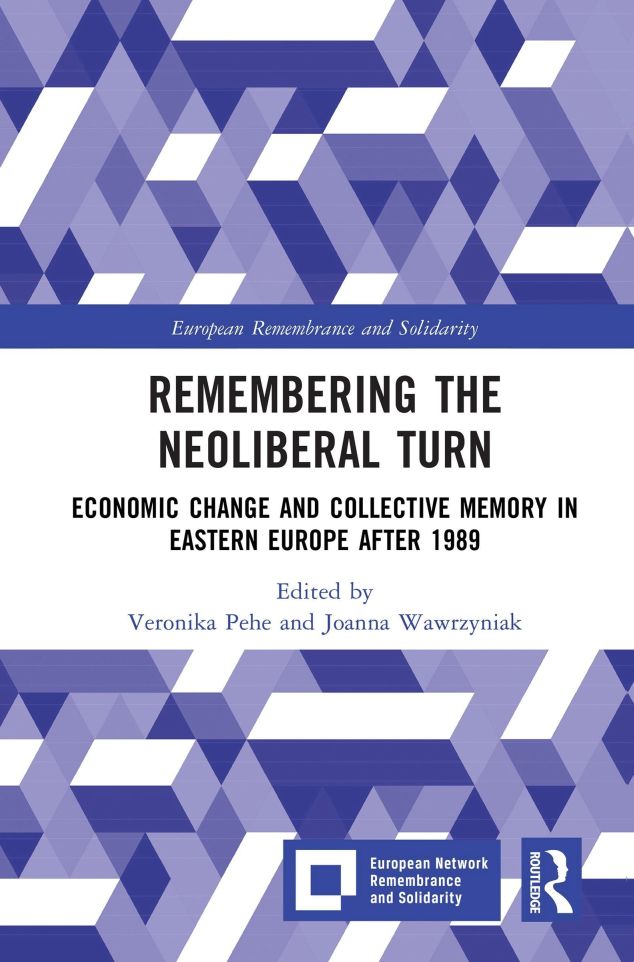 Together with my colleague Veronika Pehe from the Czech Academy of Sciences, I co-edited Remembering the Neoliberal Turn. The book investigates how societies in our region – including Poland, the Czech Republic, Slovakia, and others – remember the turbulent decade of the 1990s, marked by rapid economic transformation. We were interested not only in the dominant political myths that emerged, but also in the counter-narratives – how different groups, from businessmen to workers to filmmakers, have made sense of this period in their own ways.
Together with my colleague Veronika Pehe from the Czech Academy of Sciences, I co-edited Remembering the Neoliberal Turn. The book investigates how societies in our region – including Poland, the Czech Republic, Slovakia, and others – remember the turbulent decade of the 1990s, marked by rapid economic transformation. We were interested not only in the dominant political myths that emerged, but also in the counter-narratives – how different groups, from businessmen to workers to filmmakers, have made sense of this period in their own ways.
What we hope readers take away is that the 1990s are not just part of a closed chapter in history. The way we remember that decade continues to shape how people feel about democracy, inequality, and social justice today. Memory of the neoliberal turn isn’t fixed – it’s constantly being reinterpreted, often in ways that reveal deeper tensions about the direction of our societies. Understanding those shifting narratives can help us make better sense of the present.
This work grew out of a broader conviction that memory is never just about historical facts. It’s about how people feel about the past – what they carry with them emotionally, and how that shapes their sense of who they are. I’m currently pursuing this idea further in a new project with Lithuanian scholar Jogilė Ulinskaitė, where we focus on the memory of deindustrialisation in our region. We’re especially interested in the emotional responses to economic transition – feelings of pride, anger, shame, blame, compassion or betrayal – and how these are (or are not) reflected in biographical stories as well as in museums. We look not only at what is remembered, but also what is left out, what is silenced, and what that tells us about societal values.
You’re also involved in the Slow Memory COST Action. What is it about?
It’s a collaborative project I’m part of, alongside Jenny Wüstenberg (the Chair of the Action) Kateřina Králová, and many other scholars across Europe. In it, we try to challenge some of the assumptions within memory studies itself – particularly its traditional focus on discrete, violent events, like World War II. Instead, we shift the emphasis to processes – long-term changes that unfold more gradually.
We study the memory of phenomena like environment, work, or welfare – that don’t have a clear beginning or end, but which deeply shape people’s lives. Our aim is to understand how individuals, groups, and societies reflect on these slow transformations, and how they’re remembered (or sometimes forgotten). We also focus on conflict, because conflict too, can be seen not just as an event, but as an ongoing process – one with long tails and long memories.
We also want to bring this perspective into the public sphere. We have prepared educational materials, policy briefs, and we’re just about to launch an online exhibition on “slow memory,” exploring how those processes are remembered across Europe.
If you had to offer the general public one insight from memory studies, what would it be?
That memory isn’t simply something we inherit – it’s something we construct. By becoming more aware of how representantions of the past are shaped and circulated, we can better understand the forces that influence our societies today – and make more deliberate choices about the kind of world we want to live in.
| prof. Joanna Wawrzyniak |
| Associate Professor of Sociology at the University of Warsaw and founding director of the Center for Research on Social Memory, is a leading figure in memory studies, specializing in oral history, museum representation, and the collective memory of socialism, neoliberal transformation, and deindustrialization. Her extensive publication record includes co-authored and co-edited works in English such as Veterans, Victims and Memory: The Politics of the Second World War in Communist Poland (2015), The Enemy on Display: The Second World War in Eastern European Museums (2015), Memory and Change in Europe: Eastern Perspectives (2016), Regions of Memory: Transnational Formations (2022) or the recent Remembering the Neoliberal Turn (2023) co-edited with Veronika Pehe, as well as award-winning Polish edition Cięcia. Mówiona historia transformacji (2020). She also co-chairs the Slow Memory COST Action, where – together with Jenny Wüstenberg, Kateřina Králová, and scholars from nearly all EU countries – she explores long-term memory processes related to the environment, deindustrialisation, welfare, politcs and conflict. |


